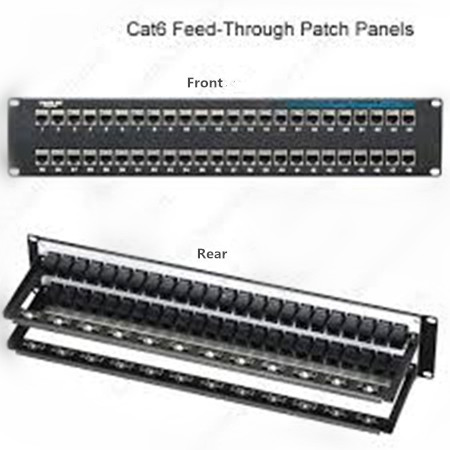Introduction to Patch Panels
Different systems have a functional unit that serves as a central location for monitoring and connecting circuits. In the case of optical cabling, patch panels represent the functional unit, which are used to connect and disconnect equipment. Without them, the transmission of data is rendered ineffective. Patch panels allow one to terminate long and troublesome cables so that a signal is connected directly through a patch code to its destination. Patch panels, as a crucial (and often overlooked) element of any interconnected network will be introduced in this article.
Why Do We Need Patch Panels?
There is no denying that patch panels are the crucial elements in cabling systems no matter how big or small. It is said that patch panels are basically pictured as the “traffic light” for a cabling network, and they allow you to terminate cable elements and the signal to be connected to the final destination. In addition, patch panels are found in the telecommunications section of a building, enabling the ease of managing telecommunications networks.
Patch panels are so critical to a system that if anything goes wrong with them, the entire system may fail. That means that they are very important to your networking system! Patch panels also play a big role in the administration of the telecommunications network. Some believe that they are the absolute only way to successfully transfer lines from one office to the next office.

Figure 1 shows the front and rear of a cat6 patch panel
Since they allow such easy management of cables, it makes sense to choose patch panels carefully. There are copper patch panels and fiber patch panels available on the market. If you use both, it is best to separate the cabling made out of fiber from cabling made from copper. But what if you want to choose between copper and fiber patch panels? Which kind is best?
Copper or Fiber Patch Panels
First, you should know that patch panels are used in fiber cabling networks as well as copper cabling networks. So is there a difference between these two types of cables as far as performance is concerned? Well, most professionals don’t see any differences. But others believe that the fiber patch panels are better, even though they are more expensive than their copper counterpart. In fact, they can be up to 40 percent higher in cost.
When it comes to copper patch panels, each pair of wires has a port. Fiber patch panels require two ports, but no hardwiring is needed. Fiber patch panels are a lot easier to install because of this. The fiber is fed through a coupler.
In addition, most professionals are in agreement that fiber is a lot faster than copper patch panels. Both types of patch panels must perform according to the same TIA/EIA standards that are needed to produce speed and signal performance for the rest of the cabling network.
FS.COM Copper Patch Panels
FS.COM Cat5e and Cat6 copper patch panels are the cost-effective solutions for your applications. Take our cat5e patch panels as an example, they are compliant with TIA/EIA 568 industry specifications. These patch panels can maximize your network performance and keep up with the growing changes in your network. FS.COM Cat5e patch panels are available in 6-port and 8-port module groupings, in 8, 12, 24, and 48-port sizes. The high density panel design can be mounted to standard racks or cabinets, accommodate top, bottom or side cable entry, and also save valuable rack space.